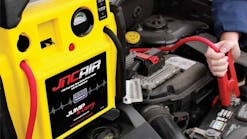Finally some good economic news; aftermarket fundamentals are solid
This week brought some of the best economic news we’ve had in a long time, and it’s reason to celebrate as we head into a new year. The government reported the lowest national unemployment rate in five years at 7 percent. This was followed by the news that household net worth rose 2.6 percent in the third quarter, reaching a record level, according to the Federal Reserve. Home prices and the stock market are moving in the right direction.
Economists think consumers may be more inclined to spend money, which if true, will further drive the economy. This month has probably brought the best economic news since the start of the Great Recession.
If you’re running a business, good economic news is especially important since a strong economy encourages customers to spend money. There’s truth in the cliché, “A rising tide lifts all boats.”
For automotive repair shops, the most important benefit in the short term might be psychological. Positive economic news puts customers in a better mood, making them easier to do business with. It also puts employees in a good mood, making them easier to work with.
And the psychological boost shouldn’t be understated; positive attitudes make people more productive.
As for the economy’s impact on the demand for aftermarket service, the economy has been positive for the aftermarket despite the recession, and this isn’t likely to change any time soon.
David Portalatin, executive director at NPD Group, gave a very upbeat forecast on consumer confidence as it relates to the aftermarket during the recent AAPEX Show in Las Vegas. He noted that the aftermarket has been in a better position than many other sectors of the U.S. economy due to the importance that consumers are placing on automotive aftermarket service. He noted consumers spend about 10 percent of their available funds on their vehicles, making automotive the third highest expenditure after food and fuel.
More importantly, Portalatin noted consumers have changed the way they view older vehicles. Consumers are willing to invest more in maintenance and repair of older vehicles than they used to.
A major consideration that weighs favorably for the aftermarket is the fact that consumers are placing greater value on used cars in general. The “sweet spot” – the average age of vehicles that consumers are expected to invest in to maintain in good condition – continues to increase. Portalatin said the “sweet spot” has increased from the four-to-seven-year range to the seven-to-15-year range.
For repair shops to take advantage of this opportunity, Portalatin said they must recognize that consumers place more importance on quality and performance than on price.
Challenges facing the aftermarket include fewer miles being driven. This is due to higher fuel prices and the “generational shift,” which refers to the increasing number of baby boomers retiring who are not being replaced by the millennial generation, which drives less.
All things considered, things are moving in the right direction. Repair shops have every reason to celebrate the holidays.


